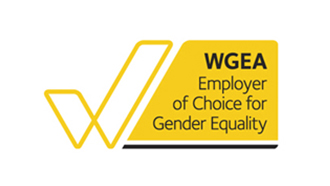- within Government and Public Sector topic(s)
- with Senior Company Executives, HR and Inhouse Counsel
- in Asia
- in Asia
- in Asia
- in Asia
- in Asia
- in Asia
- in Asia
- with readers working within the Law Firm industries
Australia's transition to a net zero economy took a significant step forward with the release of the Australian Sustainable Finance Taxonomy - a science-based framework designed to bring greater consistency to the classification of green and transition-aligned activities across the economy.
As sustainability becomes central to financial and operational decision-making, understanding and applying the Taxonomy will be essential for a wide range of market participants - including non-financial corporates, lenders, issuers, investors, asset owners and public entities. For organisations seeking to attract capital and build investor confidence, alignment with the Taxonomy signals environmental integrity and positions the business for long-term, sustainable growth.
Developed by the Australian Sustainable Finance Institute (ASFI) in partnership with the Australian Treasury, the first version of the Australian sustainable finance taxonomy (Taxonomy) was released in June 2025, following 20 months of development and two phases of public consultation.
The Taxonomy provides a classification system for transition finance, to guide capital allocation towards activities that align with Australia's Net Zero Plan and the Safeguard Mechanism and will interact with Australia's Corporate Transition Plan regime by providing market clarity on sustainable considerations for credible transition plans.
The Taxonomy is a key component of the Federal Government's broader effort to accelerate public and private investment towards net zero-aligned activities, as outlined in Priority 4 under Pillar 1 (Improving Transparency on Climate and Sustainability) of the Government's Sustainable Finance Roadmap (Roadmap). ASFI is currently piloting the Taxonomy with nine financial institutions to test its practical application and support its integration into mainstream sustainable finance practices.
Following the pilot, the Government has signalled its intention to explore options for long-term governance arrangements and potential regulatory applications in consultation with key stakeholders.
Key features of the Taxonomy
While the Taxonomy is currently voluntary, it provides a 'common standard' for identifying green and transition-aligned economic activities, such as assets, projects, facilities or measures.It uses a dual classification framework activities that are fully aligned with net zero outcomes are classified as 'green' while those on a credible pathway toward net zero, subject to specific performance thresholds, are classified as 'transition'.
The Taxonomy initially applies to 71 activities across six priority sectors - agriculture, energy, minerals and mining, manufacturing, property and transport - and is designed to be a 'living document', with future updates expected to expand its scope and refine its criteria.Several notable updates from previous drafts of the Taxonomy have been implemented in response to feedback received during the second public consultation.For example:
- Numerous sector-specific and activity-specific technical
screening criteria (TSCs) have been fine tuned to
enhance the usability of the Taxonomy and remove infeasible
targets. For example, the emissions intensity thresholds relating
to proposed green criteria for copper, lithium and nickel have been
clarified, and the methane reduction efficacy requirement for
methane inhibitors has been reduced from 20% to 10%. The range of
economic activities to which the Taxonomy applies has also been
adjusted. For example, agricultural activities are now eligible to
be considered 'green' if they meet the requisite TSCs,
while other activities (such as bioenergy-based energy generation
using native forest biomass) have been expressly excluded in line
with its exclusion under the government's Renewable Energy
Target.
- The current version of the Taxonomy aims to reduce ambiguity and subjectivity in the application of Do No Significant Harm (DNSH) and Minimum Social Safeguards (MSS) principles. Many qualitative requirements (such as those that previously required 'best efforts' disclosure) have been replaced or supplemented with specific requirements that reflect existing domestic or international legal frameworks. For example, terms such as 'Nature-based Solutions' and 'Blue Green Instructure' have now been defined, and MSS principles relating to First Nations peoples have been reworked to incorporate the principles of the United Nations Declaration on the Rights of Indigenous Peoples.
Business use cases: a tool for investment decision-making?
The Taxonomy can be applied both as a tool to inform activity-level allocation decisions and as a reference point to assess or demonstrate the overall alignment of business activities and investments with transition-related opportunities at the entity level. It can also serve as a screening tool to identify eligible green investments and expenditure, support the issuance of green-labelled debt (sovereign, sub-sovereign and corporate) by both public and private sector actors and establish eligibility criteria, guide project evaluation and selection and inform post issuance impact reporting.
In particular, ASFI is working with the Australian Office of Financial Management and state treasury corporations to develop taxonomy-aligned green labelled bond guidance, which is expected to be released in 2026. Beyond its use in green finance issuance, the Taxonomy can also be used to inform capital allocation and investment decisions, assess the emissions performance of existing assets, guide strategic asset allocation decisions and act as a reference point for the deployment of public finance towards climate-related initiatives.
At the entity level, the Taxonomy can be used as a tool to demonstrate alignment of business operations and investments with climate and environmental objectives, thereby supporting climate related disclosures and the development of credible transition plans and strategies. Key taxonomy-aligned metrics that entities may report include:
- Percentage of taxonomy-aligned revenues. This
is the percentage of an entity's total net revenue derived from
products or services that are taxonomy-aligned.
- Percentage of taxonomy-aligned capital expenditures
(CapEx). This is the percentage of an entity's total
CapEx (tangible and intangible assets) allocated toward
taxonomy-aligned activities.
- Percentage of taxonomy-aligned operational expenditures (OpEx). This is the percentage of an entity's total OpEx allocated toward taxonomy-aligned activities (e.g. R&D, maintenance and servicing, and research and development).
Climate-related financial disclosures
The Australian Sustainability Reporting Standard 2 (AASB S2), requires reporting entities to disclose climate related metrics and targets including:
- the amount and percentage of assets or business activities
aligned with climate-related opportunities; and
- the amount of capital expenditure, financing or investment deployed towards climate-related risks and opportunities.
While the use of the Taxonomy to inform disclosures against the requirements of AASB S2 is voluntary and not mandated, using the Taxonomy to inform these disclosures can enhance transparency and comparability, and may be a valuable way for entities to demonstrate how their business activities and investments are moving toward alignment with climate-related opportunities year-on-year.
Transition plan disclosure
Australia's corporate transition plan disclosure requirements, which have been progressively rolled out from 1 January 2025, are contained in the new climate disclosure regime for large companies and financial institutions, under the Corporations Act 2001 (Cth). The Roadmap includes a commitment that Treasury will develop and publish best practice guidance on transition planning by the end of 2025.
While not currently mandated in Australia, the disclosure of forward-looking taxonomy-aligned targets, particularly related to CapEx, may be valuable in supporting an entity to communicate credibility, intent and ambition to domestic and global investors regarding its plans to capitalise on climate-related opportunities. This further serves as a safeguard against 'greenwashing' which is defined in the market as investment in technologies that continue to be carbon-intensive and present a marginal impact on reducing emissions.
Demonstrating alignment with the Taxonomy
To support the initial implementation of the Taxonomy, ASFI has provided the following limited guidance as to how users can utilise the Taxonomy based on the principles of transparency and disclosure:
Level of alignment |
Utilisation |
|---|---|
| Full alignment | Demonstrating alignment with the TSC for climate change mitigation plus all applicable DNSH and MSS criteria. |
| Partial alignment | Demonstrating alignment with the TSC for climate change mitigation plus partial alignment with the applicable DNSH and/or MSS criteria. |
| TSC-only alignment | Demonstrating alignment with the TSC for climate change mitigation only. |
Source: Australian Sustainable Finance Institute, Australian sustainable finance taxonomy Version 1 - 2025, p23.
Notwithstanding the potential use cases outlined above, organisations seeking to utilise the Taxonomy by making claims of alignment should be aware that they are responsible for clearly disclosing which parts of the Taxonomy they are aligning with - and which parts they are not - and for ensuring that the impression conveyed by those claims is not misleading or deceptive. Inaccurate or overstated claims may expose entities to regulatory scrutiny, litigation risk, reputational damage and potential enforcement action including by the Australian Securities and Investments Commission (ASIC) and other regulatory bodies. It is therefore critical that any claims of alignment with the Taxonomy are accurate, substantiated and specific. At a minimum, users should specify those parts of the applicable DNSH and/or MSS criteria with which alignment is and is not claimed.
International taxonomy developments
Australia's Taxonomy is designed to be interoperable with leading global frameworks, including the European Union Sustainable Finance Taxonomy. While the UK government has opted not to pursue a domestic green taxonomy - citing the strong alignment of the UK firms with the EU framework - this decision is expected to have minimal influence on Australia's approach. Unlike the UK, Australia does not face the same risk of duplication, and the EU taxonomy continues to be regarded by ASFI, the Treasury and industry experts as the benchmark for sustainable finance classification systems.
Importantly, version 1 of the Australian Taxonomy is intended as a living document, with scope for ongoing refinement. It is therefore possible (though not inevitable) that future developments in the UK or elsewhere could be reviewed and, where relevant, inform updates to the Taxonomy.
The Federal Government has indicated it will explore long-term governance arrangements and potential regulatory applications for the Taxonomy, in consultation with key stakeholders. Future iterations are expected to expand coverage to the remaining five environmental objectives, likely through further consultation and phased implementation.
Given the commitments outlined in the Sustainable Finance Roadmap, organisations should prepare for the potential integration of the Taxonomy into regulatory and policy instruments - particularly those related to mandatory nature-related financial disclosures, transition planning and sustainable finance product labelling
The content of this article is intended to provide a general guide to the subject matter. Specialist advice should be sought about your specific circumstances.
 |
 |
| Lawyers Weekly Law firm of the year
2021 |
Employer of Choice for Gender Equality
(WGEA) |




